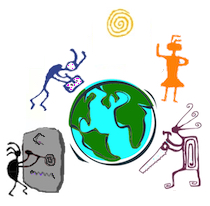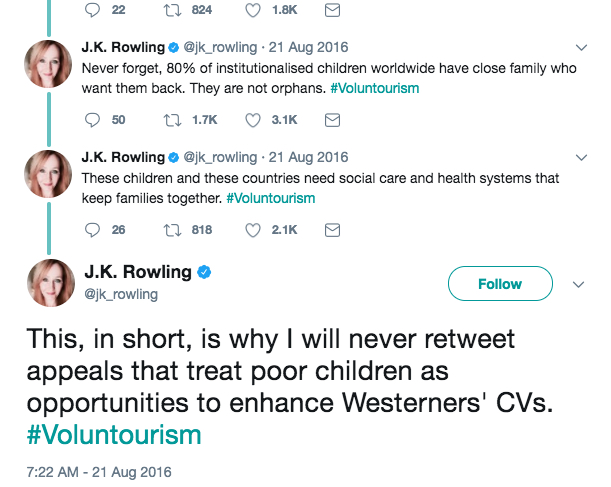 Looks like an interesting read for those in the nonprofit sector and other mission-based organizations, and a great resource of quotes for various program and funding proposals – maybe even interviews with the press to explain why a nonprofit is doing whatever it is it is doing.
Looks like an interesting read for those in the nonprofit sector and other mission-based organizations, and a great resource of quotes for various program and funding proposals – maybe even interviews with the press to explain why a nonprofit is doing whatever it is it is doing.
At $150, I’ll have to beg my way into an academic library in order to read it…
Edited by Emma M. Seppälä, Emiliana Simon-Thomas, Stephanie L. Brown, Monica C. Worline, C. Daryl Cameron, and James R. Doty
How do we define compassion? Is it an emotional state, a motivation, a dispositional trait, or a cultivated attitude? How does it compare to altruism and empathy? Chapters in this Handbook present critical scientific evidence about compassion in numerous conceptions… and contribute importantly to understanding how we respond to others who are suffering… it explores the motivators of compassion, the effect on physiology, the co-occurrence of wellbeing, and compassion training interventions. Sectioned by thematic approaches, it pulls together basic and clinical research ranging across neurobiological, developmental, evolutionary, social, clinical, and applied areas in psychology such as business and education. In this sense, it comprises one of the first multidisciplinary and systematic approaches to examining compassion from multiple perspectives and frames of reference.
Here’s the table of contents:
Preface
James R. Doty
Part One: Introduction
Chapter 1: The Landscape of Compassion: Definitions and Scientific Approaches
Jennifer L. Goetz and Emiliana Simon-Thomas
Chapter 2: Compassion in Context: Tracing the Buddhist Roots of Secular, Compassion-Based Contemplative Programs
Brooke D. Lavelle
Chapter 3: The Empathy-Altruism Hypothesis: What and So What?
C. Daniel Batson
Chapter 4: Is Global Compassion Achievable?
Paul Ekman and Eve Ekman
Part Two: Developmental Approaches
Chapter 5: Compassion in Children
Tracy L. Spinrad and Nancy Eisenberg
Chapter 6: Parental Brain: The Crucible of Compassion
James E. Swain and S. Shaun Ho
Chapter 7: Adult Attachment and Compassion: Normative and Individual Difference Components
Mario Mikulincer and Phillip R. Shaver
Chapter 8: Compassion-Focused Parenting
James N. Kirby
Part Three: Psychophysiological and Biological Approaches
Chapter 9: The Compassionate Brain
Olga M. Klimecki and Tania Singer
Chapter 10: Two Factors that Fuel Compassion: The Oxytocin System and the Social Experience of Moral Elevation
Sarina Rodrigues Saturn
Chapter 11: The Impact of Compassion Meditation Training on the Brain and Prosocial Behavior
Helen Y. Weng, Brianna Schuyler, and Richard J. Davidson
Chapter 12: Cultural neuroscience of compassion and empathy
Joan Y. Chiao
Chapter 13: Compassionate Neurobiology and Health
Stephanie L. Brown and R. Michael Brown
Chapter 14: The Roots of Compassion: An Evolutionary and Neurobiological Perspective
C. Sue Carter, Inbal Ben-Ami Bartal, and Eric C. Porges
Chapter 15: Vagal pathways: Portals to Compassion
Stephen W. Porges
Part Four: Compassion Interventions
Chapter 16: Empathy Building Interventions: A Review of Existing Work and Suggestions for Future Directions
Erika Weisz and Jamil Zaki
Chapter 17: Studies of Training Compassion: What Have We Learned, What Remains Unknown?
Alea C. Skwara, Brandon G. King, and Clifford D. Saron
Chapter 18: The Compassion Cultivation Training (CCT) Program
Philippe R. Goldin and Hooria Jazaieri
Chapter 19: From Specific to General: The Biological Effects of Cognitively-Based Compassion Training
Jennifer Mascaro, Lobsang Tenzin Negi, and Charles L. Raison
Part Five: Social Psychological and Sociological Approaches
Chapter 20: Compassion Collapse: Why We Are Numb to Numbers
C. Daryl Cameron
Chapter 21: The Cultural Shaping of Compassion
Birgit Koopman-Holm and Jeanne L. Tsai
Chapter 22: Enhancing compassion: Social psychological perspectives
Paul Condon and David DeSteno
Chapter 23: Empathy, compassion, and social relationships
Mark H. Davis
Chapter 24: The Class-Compassion Gap: How Socioeconomic Factors Influence Compassion
Paul K. Piff and Jake P. Moskowitz
Chapter 25: Changes Over Time in Compassion-Related Variables in the United States
Sasha Zarins and Sara Konrath
Chapter 26: To Help or Not to Help: Goal Commitment and the Goodness of Compassion
Michael J. Poulin
Part Six: Clinical Approaches
Chapter 27: Self-Compassion and Psychological Well-being
Kristin Neff and Christopher Germer
Chapter 28: Compassion Fatigue Resilience
Charles R. Figley and Kathleen Regan Figley
Chapter 29: Compassion Fears, Blocks and Resistances: An Evolutionary Investigation
Paul Gilbert and Jennifer Mascaro
Part Seven: Applied Compassion
Chapter 30: Organizational Compassion: Manifestations Through Organizations
Kim Cameron
Chapter 31: How Leaders Shape Compassion Processes in Organizations
Monica C. Worline and Jane E. Dutton
Chapter 32: Compassion in Healthcare
Sue Shea and Christos Lionis
Chapter 33: A Call for Compassion and Care in Education: Toward a More Comprehensive ProSocial Framework for the Field
Brooke D. Lavelle, Lisa Flook, and Dara G. Ghahremani
Chapter 34: Heroism: Social Transformation Through Compassion in Action
Philip G. Zimbardo, Emma Seppälä, and Zeno Franco
Chapter 35: Social Dominance and Leadership: The mediational effect of Compassion
Daniel Martin and Yotam Heineberg










